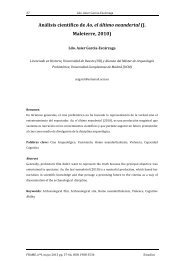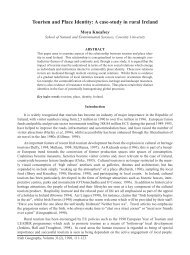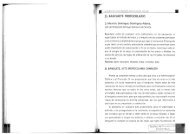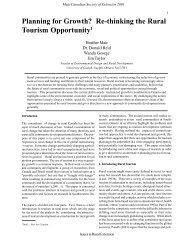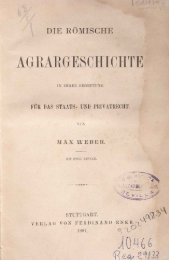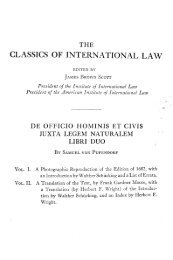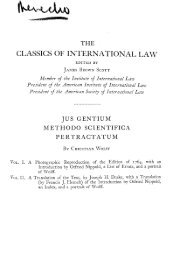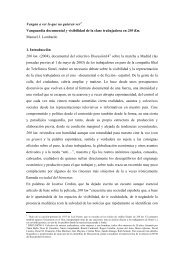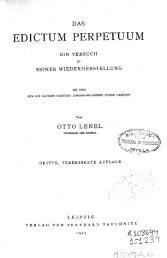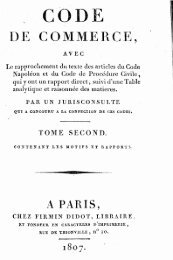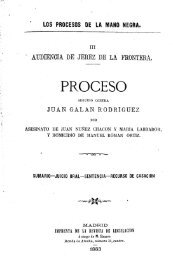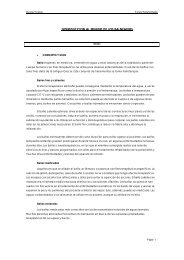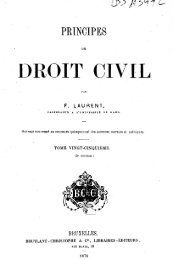Measuring Sustainable Tourism Development in Remote Rural ...
Measuring Sustainable Tourism Development in Remote Rural ...
Measuring Sustainable Tourism Development in Remote Rural ...
Create successful ePaper yourself
Turn your PDF publications into a flip-book with our unique Google optimized e-Paper software.
Table 1: Community participation<br />
Item<br />
L<strong>in</strong>doso/Soajo<br />
Yes No<br />
Svaneke<br />
Yes No<br />
Did you attend any of the last three meet<strong>in</strong>gs of the<br />
local council?<br />
24% 76% 20% 80%<br />
Do you serve on any committee work<strong>in</strong>g to improve<br />
the quality of life?<br />
48% 52% 32% 68%<br />
Do you persuade others to take a particular position? 66% 34% 24% 76%<br />
Do you speak to the town council about community<br />
problems?<br />
71% 29% 52% 48%<br />
When it comes to persuad<strong>in</strong>g others to take a particular position the distribution <strong>in</strong><br />
Soajo/L<strong>in</strong>doso and Svaneke is significant different. The reason for this could be that <strong>in</strong><br />
Svaneke, as <strong>in</strong> Denmark <strong>in</strong> general, you do not want to <strong>in</strong>terfere with your neighbours –<br />
they are allowed to th<strong>in</strong>k and believe what they wish and you should not discuss<br />
disagreements. The situation <strong>in</strong> Soajo/L<strong>in</strong>doso is different, mostly as a result of the<br />
need for contact with neighbours due to the daily agricultural tasks.<br />
Table 2, below shows the average scores for 27 different statement regard<strong>in</strong>g the<br />
community profile. In general the citizens <strong>in</strong> Svaneke seem to be much more satisfied<br />
than the citizens <strong>in</strong> Soajo/L<strong>in</strong>doso. The answer that differs most significantly is car<strong>in</strong>g of<br />
the community’s look. Svaneke has a reputation for be<strong>in</strong>g one of the most beautiful<br />
towns <strong>in</strong> Denmark. The <strong>in</strong>habitants are very proud of their town and wish to ma<strong>in</strong>ta<strong>in</strong> it.<br />
In Soajo/L<strong>in</strong>doso the cultural architecture has suffered some damage as local people<br />
are push<strong>in</strong>g for what has been termed “rural urbanisation”. Another statement worth<br />
mention<strong>in</strong>g is statement 4. The answers to this question aga<strong>in</strong> reflect the cultural<br />
differences between the communities. In Denmark the public sector is almost obliged<br />
to take care of the eldest people and you would never expect it to be a family-matter.<br />
Until a few years ago, <strong>in</strong> Soajo/L<strong>in</strong>doso k<strong>in</strong>ship ties were still strong and it was still<br />
seen as the responsibility of each family to care for their own. Accord<strong>in</strong>g to statement<br />
3 <strong>in</strong> table 2, one may conclude that it is now a generally accepted fact that the public<br />
sector has to care for the elderly. The exodus of the young <strong>in</strong> the last 40-50 years<br />
probably has been the most <strong>in</strong>fluential factor this change. Today, these people live <strong>in</strong><br />
other countries; their parents or those who chose not to emigrate are now older and<br />
with few relatives to look after them.<br />
The attitudes towards some of the statements are very much alike <strong>in</strong> the two different<br />
areas observed. Statement 27 stand out, because of the assertion made by the<br />
respondents that, apparently, “what is good for the community is good for me”. It is also<br />
generally agreed by the residents of the two study areas that few people should be<br />
<strong>in</strong>volved <strong>in</strong> community plann<strong>in</strong>g and improvement and that only those with the most<br />
time should have the responsibility for civic activities. Here, most time implies “free<br />
time”, or time <strong>in</strong> which people are not actively work<strong>in</strong>g. So, for example <strong>in</strong><br />
Soajo/L<strong>in</strong>doso, a farmer who has much land and spends all day work<strong>in</strong>g that land<br />
should benefit from recreational activities organised by those who have less land, thus<br />
more disposable time. The researchers observed that the people most seen at local<br />
cafés were precisely the people who had less land and no other source of employment.



